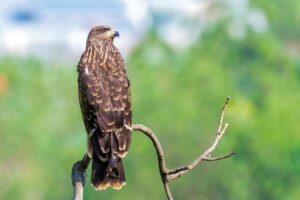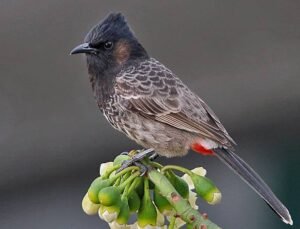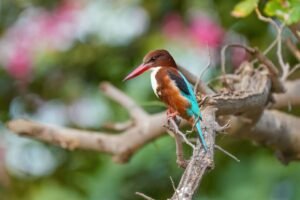The Big Four Snakes of India
At Wildlife Nest, we are committed to bringing you closer to the fascinating world of wildlife, and when it comes to snakes, there’s no better place to start than with India’s “Big Four.” These four venomous snakes are not only among the most dangerous in the country but are also incredibly intriguing creatures that play a vital role in our ecosystems. Let’s explore these snakes in detail, making sure your journey through the world of reptiles is as thrilling as it is informative.
The Big Four Snakes of India: Quick Reference Guide
| Snake | Appearance & Habitat | Venom Type & Unique Traits |
|---|---|---|
| Indian Cobra | Hood with spectacle-like pattern, color varies from brown to black, 1.5-2m long. Found across India in forests, fields, urban areas. | Neurotoxic. Iconic hood flare, highly revered in Indian culture. |
| Common Krait | Glossy black with narrow white bands, up to 1.75m long. Widespread in central and southern India, fields, forests, and human dwellings. | Neurotoxic. Nocturnal, extremely potent venom, painless bite. |
| Russell’s Viper | Heavy-bodied, triangular head, chain-like oval patterns, up to 1.5m long. Found in open grassy areas, farmlands, scrub forests across the Indian subcontinent. | Hemotoxic. Aggressive, loud hissing, high fatality rate in bites. |
| Saw-Scaled Viper | Small (under 80 cm), rough scales, brown/gray/reddish with darker patterns. Found in arid and semi-arid regions, particularly in Rajasthan, Gujarat, Maharashtra. | Hemotoxic. Produces “sizzling” sound by rubbing scales, small but deadly. |
Snakebite Incidents in India: Yearly Statistics
India records a significant number of snakebite incidents annually, with estimates ranging from 1.2 to 1.5 million snakebites each year. Out of these, around 50,000 to 60,000 people die due to snakebite complications.
Breakdown of Snakebite Incidents:
- Estimated Total Snakebites: 1.2 to 1.5 million per year
- Estimated Deaths: 50,000 to 60,000 per year
The Deadliest Snake in India
Among the Big Four snakes, Russell’s Viper (Daboia russelii) is responsible for the most snakebite deaths in India. Its aggressive nature, widespread presence, and potent hemotoxic venom make it the deadliest snake in the country. This snake alone contributes significantly to the high mortality rate from snakebites in rural and agricultural regions, where it is most commonly encountered.
Snakebite Incidents in India: Quick Statistics
| Category | Details | Most Deadly Snake |
|---|---|---|
| Total Snakebites per Year | 1.2 to 1.5 million | Russell’s Viper (Daboia russelii) |
| Total Deaths per Year | 50,000 to 60,000 | Responsible for most snakebite deaths due to aggressive nature and potent venom. |
1. Indian Cobra (Naja naja)
Appearance:
Known for its iconic hood, the Indian Cobra is one of the most recognizable snakes in the world. At Wildlife Nest, we love how its hood, marked with a spectacle-like pattern, symbolizes both beauty and danger. This majestic snake can vary in color from light brown to deep black, with a length ranging from 1.5 to 2 meters.
Habitat and Distribution:
The Indian Cobra is found throughout India, from bustling cities to serene rural landscapes. Its adaptability makes it a common sight in forests, fields, and even urban areas. At Wildlife Nest, we emphasize how crucial it is to understand and respect these adaptable creatures in their natural habitats.
Behavior and Venom:
Revered in Indian culture, the Indian Cobra is a symbol of both fear and respect. Despite its dangerous reputation, it is a snake that prefers to avoid conflict, striking only when threatened. Its neurotoxic venom is potent, affecting the nervous system, but at Wildlife Nest, we believe that with knowledge and caution, peaceful coexistence is possible.

2. Common Krait (Bungarus caeruleus)
Appearance:
Sleek and stealthy, the Common Krait is a master of the night. Its glossy, black body with white bands makes it a beautiful yet dangerous serpent. Growing up to 1.75 meters, this snake’s appearance is as striking as its reputation. Wildlife Nest is fascinated by how this snake blends into the shadows, a true ghost of the night.
Habitat and Distribution:
The Common Krait is widespread across India, favoring central and southern regions. It thrives in a variety of environments, from fields to forests, often venturing into human dwellings. Wildlife Nest highlights the importance of being aware of these nocturnal predators, especially in areas where they are prevalent.
Behavior and Venom:
Often considered more dangerous than the cobra, the Common Krait’s venom is a powerful neurotoxin. At Wildlife Nest, we stress the importance of prompt medical attention after any suspected bite, as symptoms can be deceptive and delay can be deadly.

3. Russell’s Viper (Daboia russelii)
Appearance:
With its heavy build and distinctive patterns, Russell’s Viper is both impressive and intimidating. This snake, reaching up to 1.5 meters, is adorned with chain-like oval patterns, giving it a striking appearance. Wildlife Nest admires how this viper’s appearance serves as both camouflage and a warning to potential threats.
Habitat and Distribution:
Found across the Indian subcontinent, Russell’s Viper prefers open, grassy areas, farmlands, and scrub forests. Its ability to blend in with its surroundings makes it a master of ambush. Wildlife Nest encourages visitors to be vigilant in these areas, where encounters with this viper are most likely.
Behavior and Venom:
Known for its aggressive nature, Russell’s Viper does not shy away from confrontation. Its hiss is a sound of danger, and its hemotoxic venom can cause severe complications. At Wildlife Nest, we emphasize understanding and respecting this snake’s space to avoid potentially fatal encounters.
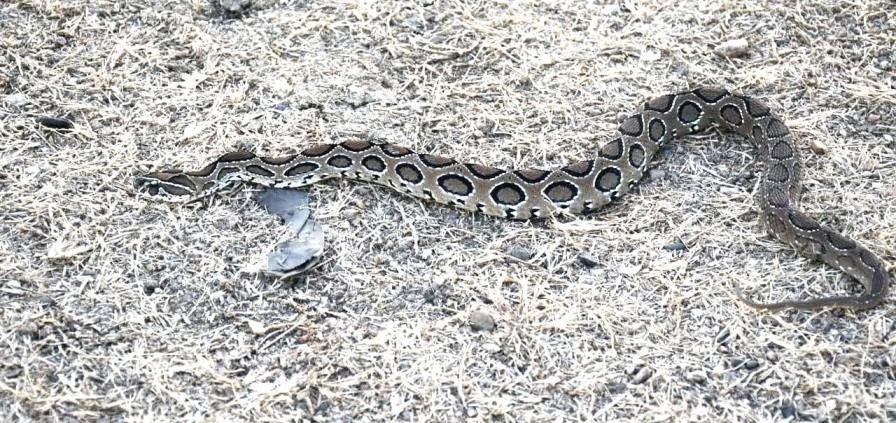
4. Saw-Scaled Viper (Echis carinatus)
Appearance:
Though small in size, the Saw-Scaled Viper is a formidable opponent. This snake, usually less than 80 centimeters long, has a rough, scaly texture and is typically brown, gray, or reddish. Wildlife Nest is captivated by how this snake’s appearance allows it to blend seamlessly into its arid habitats.
Habitat and Distribution:
Thriving in the arid and semi-arid regions of India, particularly in Rajasthan, Gujarat, and Maharashtra, the Saw-Scaled Viper is a master of survival in harsh environments. Wildlife Nest takes a closer look at how this snake’s adaptability makes it a common but dangerous resident of these areas.
Behavior and Venom:
The Saw-Scaled Viper is notorious for its defensive behavior, producing a distinctive “sizzling” sound by rubbing its scales together. Despite its small size, its venom is potent enough to cause serious harm. At Wildlife Nest, we stress the importance of recognizing this warning sign and giving this viper a wide berth.
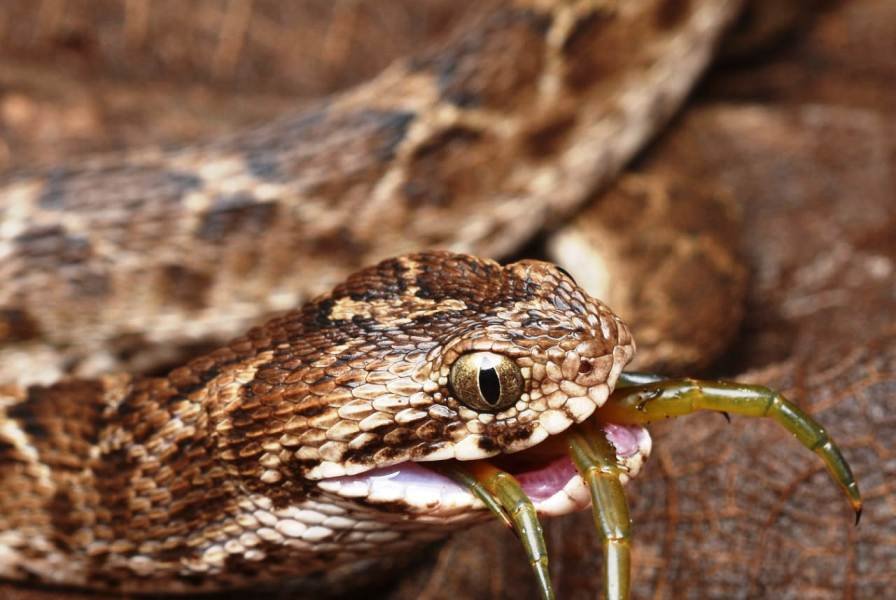
Conclusion
At Wildlife Nest, our mission is to educate and inform about the incredible creatures that share our world. The Big Four snakes of India are not just symbols of danger but are also fascinating animals that play an essential role in our ecosystems. By learning more about these remarkable reptiles, we can appreciate their beauty, respect their power, and most importantly, coexist with them safely.
Remember, understanding and respecting these snakes can prevent unwanted encounters and ensure that both humans and these magnificent creatures can thrive together. For more captivating wildlife stories and information, stay connected with Wildlife Nest—your ultimate guide to the wild wonders of nature.
Related Information That You Like
| Title | Key Content & Focus |
|---|---|
| The Ultimate Guide to Snakes | Comprehensive overview of snake species, their habitats, behavior, and ecological importance. Detailed insights into various snakes and their roles in the ecosystem. |
| What Are Reptiles? | Introduction to reptiles, covering characteristics, types, and evolutionary significance. Explains key reptilian features such as cold-bloodedness and scales. |
| The Deadliest Venom | Exploration of the most potent venoms in the animal kingdom, including those of snakes. Discusses the effects of venom on prey and humans, with a focus on highly venomous species like the Big Four. |
| Most Dangerous Snakes in the World | Highlights some of the world’s most dangerous snakes, emphasizing those with the deadliest bites. Identifies and describes snakes known for their lethal venom and aggressive behavior. |
| Wildlife Sanctuaries in India | Guide to India’s wildlife sanctuaries, focusing on biodiversity and conservation efforts. Highlights important sanctuaries and the unique wildlife they protect. |
| Gir National Park Guide | Detailed guide to Gir National Park, the habitat of the Asiatic lion. Covers the park’s history, wildlife, safari options, and tips for visitors. |
| Explore Tadoba | In-depth look at Tadoba Andhari Tiger Reserve, its wildlife, and visitor information. Includes the history, wildlife, and practical tips for exploring one of India’s top tiger reserves. |
FAQs About the Big Four Snakes of India
1. What are the Big Four snakes of India?
The Big Four snakes in India are the Indian Cobra (Naja naja), Common Krait (Bungarus caeruleus), Russell’s Viper (Daboia russelii), and Saw-Scaled Viper (Echis carinatus). These snakes are known for being the most dangerous in the country, causing the majority of snakebite incidents.
2. Why are they called the Big Four?
They are called the Big Four because they are the most dangerous and commonly found venomous snakes in India. They account for a large number of snakebite cases and deaths.
3. Which snake causes the most deaths in India?
Russell’s Viper (Daboia russelii) is responsible for the most snakebite deaths in India due to its aggressive nature, wide distribution, and powerful venom.
4. How can I identify the Indian Cobra?
The Indian Cobra is known for its hood, which has a spectacle-like pattern on it. The snake’s color can range from light brown to black, and it usually grows to 1.5 to 2 meters in length.
5. Where are these snakes commonly found in India?
- Indian Cobra: Found throughout India in forests, fields, and urban areas.
- Common Krait: Mostly found in central and southern India in fields, forests, and near homes.
- Russell’s Viper: Common in open grassy areas, farmlands, and scrub forests across India.
- Saw-Scaled Viper: Typically found in dry and semi-dry areas, especially in Rajasthan, Gujarat, and Maharashtra.
6. What should I do if I see one of these snakes?
If you see one of these snakes, stay calm and slowly move away. Do not try to handle or provoke the snake. If you are bitten, seek medical help immediately.
7. How dangerous is their venom?
- Indian Cobra: Its venom affects the nervous system and can lead to paralysis.
- Common Krait: Its venom is very strong and can cause serious harm, often without immediate pain.
- Russell’s Viper: Its venom damages tissues and can cause severe bleeding and kidney failure.
- Saw-Scaled Viper: Though small, its venom can cause serious bleeding issues.
8. How can I avoid getting bitten by a snake?
To avoid snakebites, wear shoes when walking in areas where snakes might be, use a flashlight at night, keep your surroundings clean, and learn about these snakes and their habitats.
9. What should I do if someone is bitten by a snake?
Keep the person calm, keep the bitten limb still, and get medical help as soon as possible. Do not try to cut the wound, suck out the venom, or apply a tourniquet.
10. Where can I learn more about the Big Four snakes and other wildlife?
You can learn more about the Big Four snakes and other fascinating wildlife at Wildlife Nest, where we share interesting and educational content about the natural world.

